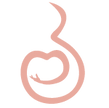Back to Basics - Breastfeeding
- Dr Tan Thiam Chye

- Jun 25, 2018
- 3 min read
Updated: Apr 27, 2019
Many positions that you and your baby can explore while breastfeeding — you may even end up inventing your own unique positions.

Posture: Encourage your newborn to take a significant amount of your breast into his/her mouth, with more of the areola and with the nipple pointing towards the soft palate. Hold your breast during the attachment and draw the baby to the breast to ensure a good latch. I recommend two nursing positions during the first few weeks: the crossover hold and the football (or clutch) hold. Once you're more comfortable with breastfeeding, you can add the cradle hold and the side-lying position. So get into your starting (basic) position and try these:
Crossover hold: Hold your baby's head with the hand opposite to the breast you'll be nursing from (if you're nursing on the right breast, hold your baby's head with your left hand). Your wrist should rest between your baby's shoulder blades, your thumb behind one ear, your other fingers behind the other ear. Using your right hand, cup your right breast, placing your thumb above your nipple and areola at the spot where your baby's nose will touch your breast. Your index finger should be at the spot where your baby's chin will touch the breast. Lightly compress your breast. This will give your breast a shape that more closely matches the shape of your baby's mouth. You are now ready to have baby latch on.
Football or clutch hold: This position is especially useful if you've had a cesarean delivery (and you want to avoid putting baby's weight on your incision site), if you your breasts are large, if your baby is small or premature, or if you're nursing twins. Just tuck your baby under your arm like you would a football: Position your baby at your side in a semi-sitting position facing you, with baby's kegs under your arm(your right arm if you are feeding on the right breast). Use pillows to bring the baby up to the level of your nipple. Support your baby's head with your right hand and cup your breast with your left hand as you would for the crossover hold.
Cradle hold: In this classic breastfeeding position, your baby's head rests in the bend of your elbow and your hand holds your baby's thigh or bottom. Baby's lower arm (if you're nursing from your right breast, it's baby's left arm) is tucked away, under your arm and around your waist. Cup your breast with your left hand (if nursing from the right breast) as in the crossover hold.
Side-lying position: This position is a good choice when you're nursing in the middle of the night or when you need some rest (that is, when you're able to have some — you'll always need some). Lie on your side with a pillow supporting your head. Position your baby on his or her head side facing you, tummy to tummy. Make sure his or her mouth is in line with your nipple. Support your breast with your hand as in the other nursing positions. You may want to put a small pillow behind your baby's back to hold him or her close.
Whichever position you choose, be sure you bring baby to the breast — not breast to the baby. Many latching-on problems occur because mom is hunched over baby. trying to shove her breast in her little one's mouth. Instead, keep your back straight and bring your baby to the breast.



